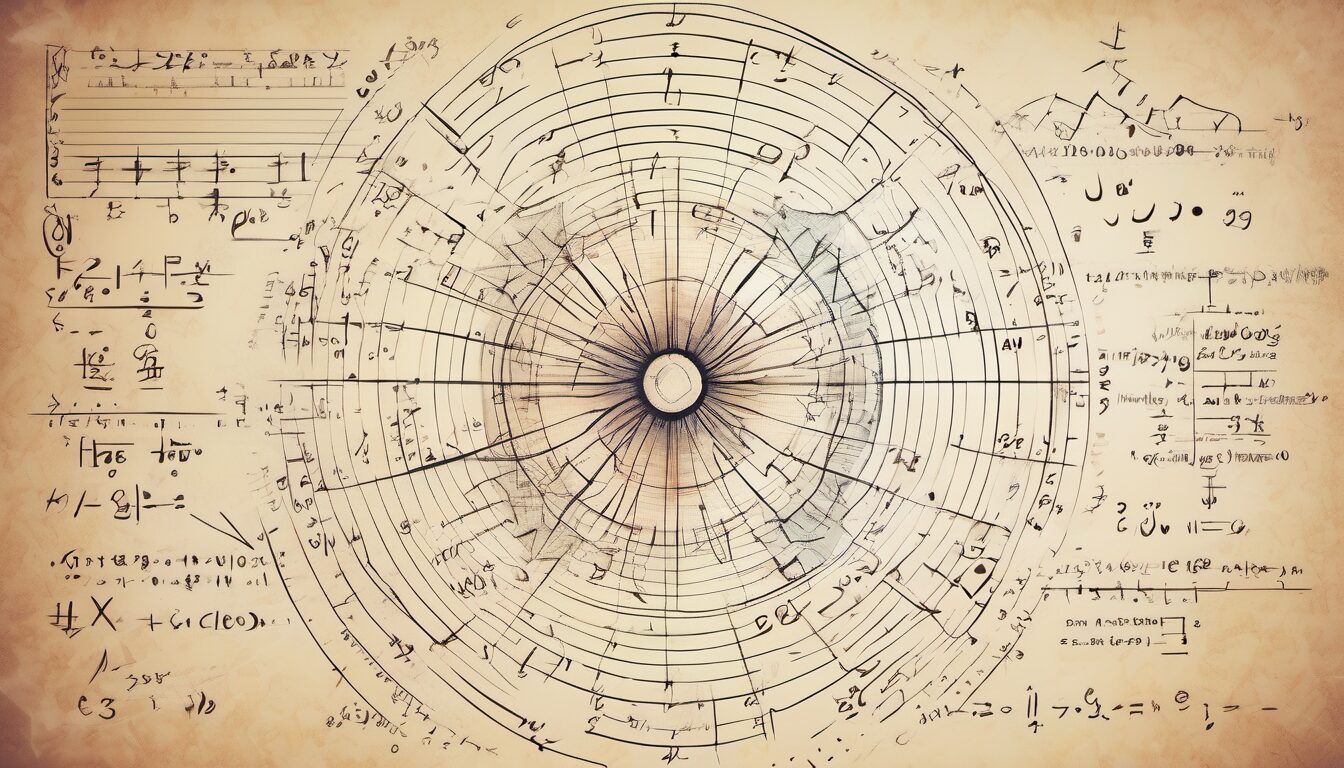Calculus, hailed as the apex of mathematical innovation, stands as a profound and graceful discipline dedicated to the exploration of change. Originating independently through the pioneering efforts of Sir Isaac Newton and Gottfried Wilhelm Leibniz in the 17th century, calculus has evolved into an indispensable cornerstone of diverse fields, ranging from physics and engineering to economics and biology. Its fundamental concepts and principles furnish us with the means to scrutinize and comprehend the intricate dynamics of evolving systems, rendering it an indispensable bedrock for contemporary science and technology.
At its core, calculus embodies a rich tapestry of techniques and ideas designed to grapple with the myriad facets of change. From the calculus of infinitesimals, which deals with quantities that approach zero, to the calculus of variations, which examines optimal paths and functions, calculus offers a versatile toolkit for dissecting and elucidating the ever-shifting phenomena encountered in the natural and artificial realms.
Moreover, calculus furnishes us with a powerful language for expressing and manipulating complex relationships, enabling us to formulate precise models and predictions that underpin modern scientific inquiry and technological innovation. Whether unraveling the mysteries of celestial motion, designing intricate structures, or unraveling the intricacies of biological systems, calculus serves as an indispensable compass guiding our exploration of the natural world.
In sum, calculus stands as a testament to the boundless ingenuity and intellectual prowess of humanity, providing us with the analytical tools and conceptual framework necessary to navigate the complex tapestry of change that defines our universe. Its enduring legacy underscores its significance as a pillar of mathematical thought, enriching our understanding of the world and empowering us to shape the course of human progress.
Understanding the Basics
Calculus, the crown jewel of mathematical achievement, is a discipline that delves deep into the study of change and accumulation. At its heart lie two fundamental concepts: differentiation and integration. These twin pillars form the bedrock upon which the entire edifice of calculus is built, enabling us to unravel the intricate dynamics of evolving systems and analyze a myriad of phenomena encountered in the natural and artificial realms.
Differentiation, the first cornerstone of calculus, is concerned with the rate of change of a function. In essence, it seeks to quantify how a function’s output changes in response to small variations in its input. This notion of instantaneous rate of change is encapsulated by the derivative of a function, which measures the slope of the tangent line to the function’s graph at a given point. By computing derivatives, we can discern critical information about the behavior of functions, such as identifying maximum and minimum points, determining concavity, and analyzing rates of growth or decay.
Integration, the counterpart to differentiation, revolves around the accumulation of quantities over a given interval. Rather than focusing on instantaneous rates of change, integration concerns itself with the cumulative effect of a function over a range of values. This accumulation is represented by the integral of a function, which calculates the area under the curve of the function’s graph within a specified interval. Integration enables us to compute sums, calculate averages, determine areas, and solve a diverse array of problems across various fields.
The fundamental theorem of calculus serves as the keystone that bridges differentiation and integration, establishing a profound connection between these seemingly disparate concepts. This theorem asserts that differentiation and integration are inverse operations of one another, providing a powerful framework for relating derivatives to integrals and vice versa. In essence, it states that the integral of a function’s derivative over a given interval yields the difference in the function’s values at the endpoints of that interval. This profound insight illuminates the intimate relationship between the instantaneous and cumulative aspects of change, underscoring the unity and coherence of calculus as a discipline.
Together, differentiation and integration form the cornerstone of calculus, empowering us to dissect and understand the complex interplay of variables and functions that characterize the natural and artificial worlds. These fundamental concepts provide us with the analytical tools and conceptual framework necessary to model and analyze a wide array of phenomena, from the motion of celestial bodies and the behavior of physical systems to the dynamics of economic markets and the intricacies of biological processes.
In essence, calculus serves as a universal language for expressing and manipulating change, offering a versatile toolkit for navigating the dynamic tapestry of our universe. Whether unraveling the mysteries of the cosmos, designing innovative technologies, or exploring the intricacies of human behavior, calculus stands as an indispensable ally in our quest to comprehend the complexities of the world around us.
Differentiation: Unraveling Rates of Change
Differentiation is the process of finding the rate at which a quantity changes with respect to another. In simpler terms, it allows us to determine how a function behaves as its input (often denoted as \(x\) or \(t\)) varies. The derivative of a function, denoted by \(f'(x)\) or \(\frac{{df}}{{dx}}\), represents this rate of change.
Consider the function \(f(x) = 3x^2 + 2x + 1\). To find its derivative, we apply the rules of differentiation:
\[f'(x) = \frac{{df}}{{dx}} = \frac{{d}}{{dx}}(3x^2 + 2x + 1) = 6x + 2\]
Here, \(f'(x)\) represents the rate of change of \(f(x)\) with respect to \(x\). For any given value of \(x\), \(f'(x)\) tells us how fast \(f(x)\) is changing. For instance, when \(x = 2\), \(f'(2) = 6(2) + 2 = 14\). This means that when \(x = 2\), the function \(f(x)\) is changing at a rate of \(14\) units per unit change in \(x\).
Example: Velocity and Acceleration
Let’s apply differentiation to a real-world scenario: the motion of an object. Suppose an object’s position is given by the function \(s(t) = 2t^2 + 3t + 1\), where \(s\) represents position and \(t\) represents time. We can find the object’s velocity and acceleration by differentiating the position function.
1. Velocity: The velocity \(v(t)\) is the rate of change of position with respect to time. We find it by taking the derivative of \(s(t)\):
\[v(t) = \frac{{ds}}{{dt}} = \frac{{d}}{{dt}}(2t^2 + 3t + 1) = 4t + 3\]
So, the velocity function \(v(t)\) is \(4t + 3\). This tells us how the object’s position is changing over time.
2. Acceleration: Acceleration \(a(t)\) is the rate of change of velocity with respect to time. We find it by taking the derivative of the velocity function \(v(t)\):
\[a(t) = \frac{{dv}}{{dt}} = \frac{{d}}{{dt}}(4t + 3) = 4\]
The acceleration function \(a(t)\) is a constant \(4\). This means that the object’s velocity is changing at a constant rate of \(4\) units per unit change in time.
Integration: Accumulating Change
Integration is the reverse process of differentiation. It involves finding the accumulation of quantities over an interval. The integral of a function represents the total quantity accumulated over that interval.
Consider the function \(g(x) = 2x\). If we integrate this function over the interval \([0, 3]\), we find the total area under the curve:
\[A = \int_{0}^{3} g(x) dx = \int_{0}^{3} 2x dx = \left[x^2\right]_{0}^{3} = (3^2) – (0^2) = 9\]
The integral of \(g(x)\) from \(0\) to \(3\) is \(9\). This represents the total area under the curve, which, in this case, corresponds to the accumulated quantity.
Example: Finding Total Distance Traveled
Let’s return to the example of the object’s velocity function \(v(t) = 4t + 3\). If we want to find the total distance traveled by the object over the interval \([0, 2]\), we can integrate the absolute value of the velocity function:
\[D = \int_{0}^{2} |v(t)| dt = \int_{0}^{2} |4t + 3| dt\]
\[= \left[\frac{1}{2}(4t + 3)^2\right]_{0}^{2} \text{ (since } 4t + 3 \text{ is positive in this interval)}\]
\[= \frac{1}{2}[(4(2) + 3)^2 – (4(0) + 3)^2]\]
\[= \frac{1}{2}[(8 + 3)^2 – (3)^2]\]
\[= \frac{1}{2}[(11)^2 – (3)^2]\]
\[= \frac{1}{2}(121 – 9)\]
\[= \frac{1}{2}(112)\]
\[= 56\]
Therefore, the total distance traveled by the object over the interval \([0, 2]\) is \(56\) units.
Differentiation and integration are two pillars of calculus, each offering unique insights into the behavior of functions and real-world phenomena. While differentiation reveals rates of change and slopes, integration uncovers accumulated quantities and areas under curves. Together, they form a powerful framework for understanding dynamic systems and solving a wide range of problems across various fields. As we continue to delve deeper into the mysteries of the universe, the principles of calculus remain invaluable tools for unlocking its secrets.










More Stories
Inside the Hormonal Symphony: Understanding the Endocrine System
Understanding Gallstones: Causes, Symptoms, and Treatment Options
The Intricacies of Cells: Exploring the Building Blocks of Life